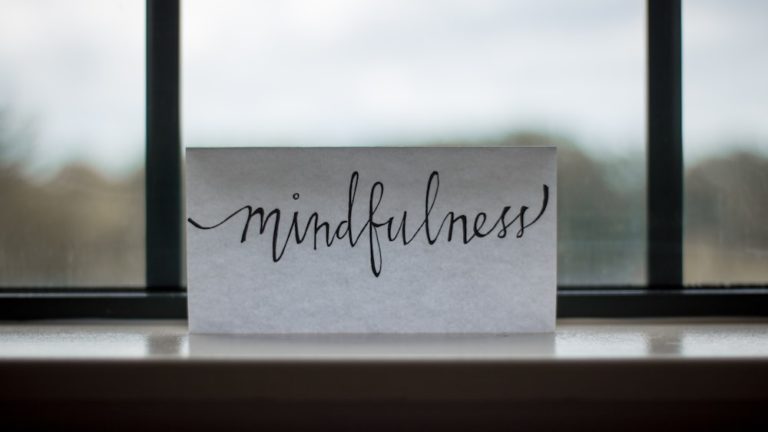Welcome to the world of mindfulness! Are you ready to embark on a journey of self-discovery and inner peace? If so, you’ve come to the right place. In this article, we’ll explore the concept of mindfulness, its origins, and the science behind it. By the time you’re done reading, you’ll have a better understanding of how to incorporate mindfulness practices into your daily life, leading to a healthier, happier, and more balanced you.
Mindfulness is a powerful tool that can help you navigate the ups and downs of life with more grace and ease. It’s not just about sitting on a cushion and meditating (although that’s an important part of it); it’s about learning to be present and aware in every moment, cultivating a sense of curiosity, and developing a kinder, more compassionate relationship with yourself and others.
So, are you ready to dive in? Let’s start by taking a closer look at what mindfulness is, its rich history, and how it’s practiced in different cultures around the world. From there, we’ll explore the scientific research supporting its many benefits and provide you with practical tips and techniques for incorporating mindfulness into your daily life. So, without further ado, let’s get started!
Understanding Mindfulness
Before we dive into mindfulness practices and techniques, it’s important to have a clear understanding of what mindfulness is and what it isn’t. Let’s explore the concept of mindfulness and its various aspects.
What is Mindfulness?
Mindfulness is a mental state achieved by focusing one’s awareness on the present moment, while calmly acknowledging and accepting one’s feelings, thoughts, and bodily sensations. It’s about being fully engaged in the here and now, without judgment or resistance. In essence, mindfulness is the practice of cultivating a heightened state of consciousness and self-awareness.
The practice of mindfulness can take many forms, from meditation to mindful movement, such as yoga or tai chi. Regardless of the method, the goal is the same: to train the mind to be present, aware, and non-judgmental.

The practice of mindfulness cultivates a heightened state of consciousness and self-awareness by focusing on the present moment and accepting feelings, thoughts, and bodily sensations without judgment.
The Origins of Mindfulness
The roots of mindfulness can be traced back over 2,500 years to the teachings of the Buddha. In Buddhism, mindfulness is considered a key element of the Noble Eightfold Path – a set of principles and practices aimed at achieving spiritual enlightenment and liberation from suffering.
Though its origins are deeply rooted in Buddhist philosophy and practice, mindfulness has evolved over the centuries and has been embraced by various religious and spiritual traditions, including Hinduism, Taoism, and Christianity.
In the 20th century, mindfulness found its way to the West, thanks in large part to the work of individuals like Jon Kabat-Zinn, who developed the Mindfulness-Based Stress Reduction (MBSR) program at the University of Massachusetts Medical Center in 1979. Since then, mindfulness has gained widespread recognition as a powerful tool for enhancing mental and emotional well-being, and its practices have been adapted to suit secular contexts and diverse populations.
Mindfulness in the East vs. the West
While the core principles of mindfulness remain consistent across cultures, the way it is practiced and understood can vary. In Eastern traditions, mindfulness is often intertwined with spiritual beliefs and practices, serving as a means to attain enlightenment or deepen one’s connection to the divine. In the West, mindfulness is more commonly viewed as a secular practice, focused on enhancing mental health, well-being, and personal growth.
That being said, both Eastern and Western approaches to mindfulness share a common goal: to cultivate a greater sense of self-awareness, presence, and acceptance, ultimately leading to a more balanced and fulfilling life.
The Science Behind Mindfulness
Over the past few decades, mindfulness has garnered a great deal of attention from the scientific community. Researchers have sought to understand the mechanisms behind mindfulness and the ways in which it can enhance mental health and well-being. Let’s take a closer look at some of the key findings in this area.
Research on Mindfulness and the Brain
Numerous studies have examined the impact of mindfulness on brain function and structure, revealing some fascinating insights. For example, research has shown that mindfulness practices can lead to increased gray matter density in brain regions associated with learning, memory, and emotional regulation, such as the hippocampus and prefrontal cortex.
In addition, mindfulness has been found to reduce activity in the amygdala, the brain’s “fight or flight” center, which is responsible for processing fear, stress, and anxiety. These changes in brain function and structure are thought to be key factors in the many benefits associated with mindfulness practice.
The Benefits of Mindfulness for Mental Health
The mental health benefits of mindfulness are vast and well-documented. Research has shown that regular mindfulness practice can lead to:
- Reduced symptoms of anxiety and depression: Studies have found that mindfulness-based interventions, such as MBSR and Mindfulness-Based Cognitive Therapy (MBCT), are effective in treating anxiety and depression, often with results comparable to those of traditional therapies and medication.
- Improved emotional regulation: Mindfulness helps individuals become more aware of their emotions, allowing them to better manage and respond to difficult feelings and situations.
- Increased self-compassion: By cultivating non-judgmental awareness and acceptance, mindfulness can foster a kinder, more compassionate relationship with oneself, leading to increased self-esteem and overall well-being.
Mindfulness and Stress Reduction
Mindfulness can be a powerful tool in reducing stress and its harmful effects on our mental and physical health. But, why does mindfulness work so well in combating stress? Well, it’s because mindfulness teaches us to observe our thoughts and feelings without judgment. When we practice mindfulness, we learn to respond to stressors in a more balanced and rational way, rather than being overwhelmed by emotions.

Numerous studies have shown the positive impact of mindfulness on stress reduction. For example, a study published in the journal Mindfulness found that participants who engaged in an eight-week mindfulness-based stress reduction program experienced significant reductions in perceived stress, anxiety, and depression. Isn’t it amazing how something as simple as being present can have such profound effects on our well-being?
Moreover, mindfulness practices have also been proven to lower cortisol levels – the primary stress hormone – in our bodies. This, in turn, helps to reduce inflammation, improve immune function, and promote overall health. So, the next time you’re feeling stressed, remember that mindfulness could be your key to a calmer and healthier life.
Practicing mindfulness teaches us to respond to stress in a more balanced and rational way, helping to reduce stress levels and improve overall health.
Mindfulness Practices
Ready to dive into the world of mindfulness and reap its numerous benefits? Let’s explore some of the most effective mindfulness practices that you can easily incorporate into your daily life.
Mindfulness of Breathing
Focusing on your breath is one of the simplest and most effective mindfulness practices. By directing our attention to the natural rhythm of our breath, we anchor ourselves in the present moment and create a sense of calm and focus. So, how can you practice mindfulness of breathing? Let’s break it down into three easy steps:
- Find a comfortable position – You can either sit on a chair or cushion, or lie down. The key is to keep your back straight and your body relaxed.
- Focus on your breath – Close your eyes and bring your attention to your breath. Observe the sensation of air entering and leaving your nostrils or the rise and fall of your chest.
- Gently return your focus – Your mind will inevitably wander, and that’s okay! Whenever you notice your thoughts drifting, gently bring your focus back to your breath.
Mindfulness of the Body
The practice of mindfulness of the body involves paying attention to the sensations in your body, such as tension, discomfort, or relaxation. This practice helps us to connect with our physical selves and become more aware of how stress and emotions manifest in our bodies.
One popular method of practicing mindfulness of the body is through body scan meditation. During this practice, you systematically bring your attention to different parts of your body, starting from your toes and working your way up to the top of your head.
Mindfulness of Emotions
Learning to be aware of our emotions without being swept away by them is a powerful skill that can be cultivated through mindfulness of emotions. This practice involves observing and acknowledging your emotions without judgment, allowing yourself to fully experience them without getting caught up in their intensity.
To practice mindfulness of emotions, try the following steps:
- Identify the emotion – When you notice an emotion arising, take a moment to name it (e.g., “I’m feeling anxious”).
- Observe the emotion – Instead of trying to suppress or ignore the emotion, allow yourself to fully experience it. Notice how it feels in your body and how it affects your thoughts and behaviors.
- Offer self-compassion – Remind yourself that it’s okay to feel what you’re feeling, and that emotions are a natural part of the human experience.
Mindfulness of Thinking
Mindfulness of thinking involves observing your thoughts as they arise, without getting caught up in them or judging them as good or bad. This practice helps us to develop a greater understanding of our thought patterns and mental habits, ultimately allowing us to make more conscious and skillful choices in our lives.
To practice mindfulness of thinking, simply bring your attention to your thoughts as they come and go, without trying to control or change them. You can imagine your thoughts as clouds drifting across the sky, or as leaves floating down a stream.
By practicing mindfulness of thinking, you can observe your thoughts without getting caught up in them or judging them, leading to a greater understanding of your mental habits and more conscious choices in life.
Cultivating Mindfulness in Daily Life
Integrating mindfulness into your daily routine can have far-reaching benefits on your mental and physical well-being. But, how can you make mindfulness a regular part of your life?

Making Mindfulness a Regular Practice
Establishing a consistent mindfulness practice is essential for reaping its full benefits. Here are some tips to help you make mindfulness a regular part of your daily routine:
- Set aside time for practice – Schedule a specific time each day for mindfulness practice, even if it’s just for a few minutes. Consistency is key!
- Find a practice that works for you – There’s no one-size-fits-all approach to mindfulness. Explore different practices and find the one that resonates with you the most.
- Be patient and kind to yourself – Remember that mindfulness is a skill that takes time to develop. Don’t be too hard on yourself if you struggle or experience setbacks. Just like any other skill, mindfulness takes practice and patience.
Mindfulness Techniques for Different Age Groups
Mindfulness techniques can be tailored to suit different age groups to make them more accessible and enjoyable for everyone. For young children, simple activities such as mindful coloring, listening to calming sounds, or practicing deep breathing can be effective. On the other hand, teenagers might benefit from mindfulness exercises like body scans, meditation, or yoga. Adults can explore a variety of techniques, including daily meditation, mindfulness-based stress reduction programs, or even mindful eating. The key is to find an age-appropriate practice that resonates with the individual and encourages consistent practice.
Mindfulness Apps and Online Resources
With the ever-growing popularity of mindfulness, there is a vast array of apps and online resources available to help you develop your practice. Some of the top mindfulness apps include Headspace, Calm, and Insight Timer, which offer guided meditations, calming soundscapes, and even sleep stories to help you relax. These apps typically offer both free and paid content, so you can find what works best for you.
For those interested in learning more about mindfulness, websites like Mindful.org and The Mindfulness Project offer a wealth of information, including articles, guided practices, and even online courses. Additionally, numerous YouTube channels, podcasts, and blogs are available to provide guidance, tips, and inspiration for your mindfulness journey. Don’t hesitate to explore these resources and find the ones that resonate with you!
FAQs
1. How long does it take to see the benefits of mindfulness?
Seeing the benefits of mindfulness varies for each individual, but many people report noticing positive changes after just a few weeks of consistent practice. However, it is important to remember that mindfulness is a lifelong journey, and the more you practice, the more profound the benefits will become.
2. Can mindfulness help with anxiety and depression?
Yes, mindfulness can help with anxiety and depression. Research has shown that regular mindfulness practice can lead to improvements in mental health, including reduced symptoms of anxiety and depression. By cultivating awareness, acceptance, and self-compassion, mindfulness can help individuals develop healthier coping mechanisms to manage their emotions.
3. Is mindfulness a religious practice?
Mindfulness is not inherently a religious practice, although its roots can be traced back to ancient Buddhist teachings. Today, mindfulness has been adapted and secularized for use in various contexts, including healthcare, education, and workplace settings. People of all faiths, or no faith at all, can benefit from practicing mindfulness.
4. How can I incorporate mindfulness into my busy schedule?
Incorporating mindfulness into your busy schedule can be as simple as setting aside a few minutes each day for dedicated practice. This could include starting your day with a brief meditation, taking a mindful walk during your lunch break, or practicing mindful breathing exercises before bed. Additionally, you can integrate mindfulness into your daily activities by bringing awareness and intention to everyday tasks, such as eating, driving, or even washing the dishes.
Conclusion
Mindfulness is a powerful tool that can help you cultivate greater self-awareness, emotional resilience, and overall well-being. By understanding the origins and science behind mindfulness, exploring various mindfulness practices, and incorporating them into your daily life, you can experience its transformative benefits firsthand.
Remember, mindfulness is a lifelong journey, and it is essential to be patient with yourself as you develop your practice. Embrace the process, learn from your experiences, and don’t forget to reach out to the wealth of resources available to support you on your path to mindfulness. With dedication and consistency, you can create a more mindful, fulfilling, and joyful life. So why wait? Begin your mindfulness journey today!
I wish you the best! Fabian.
Share with your Friends:






